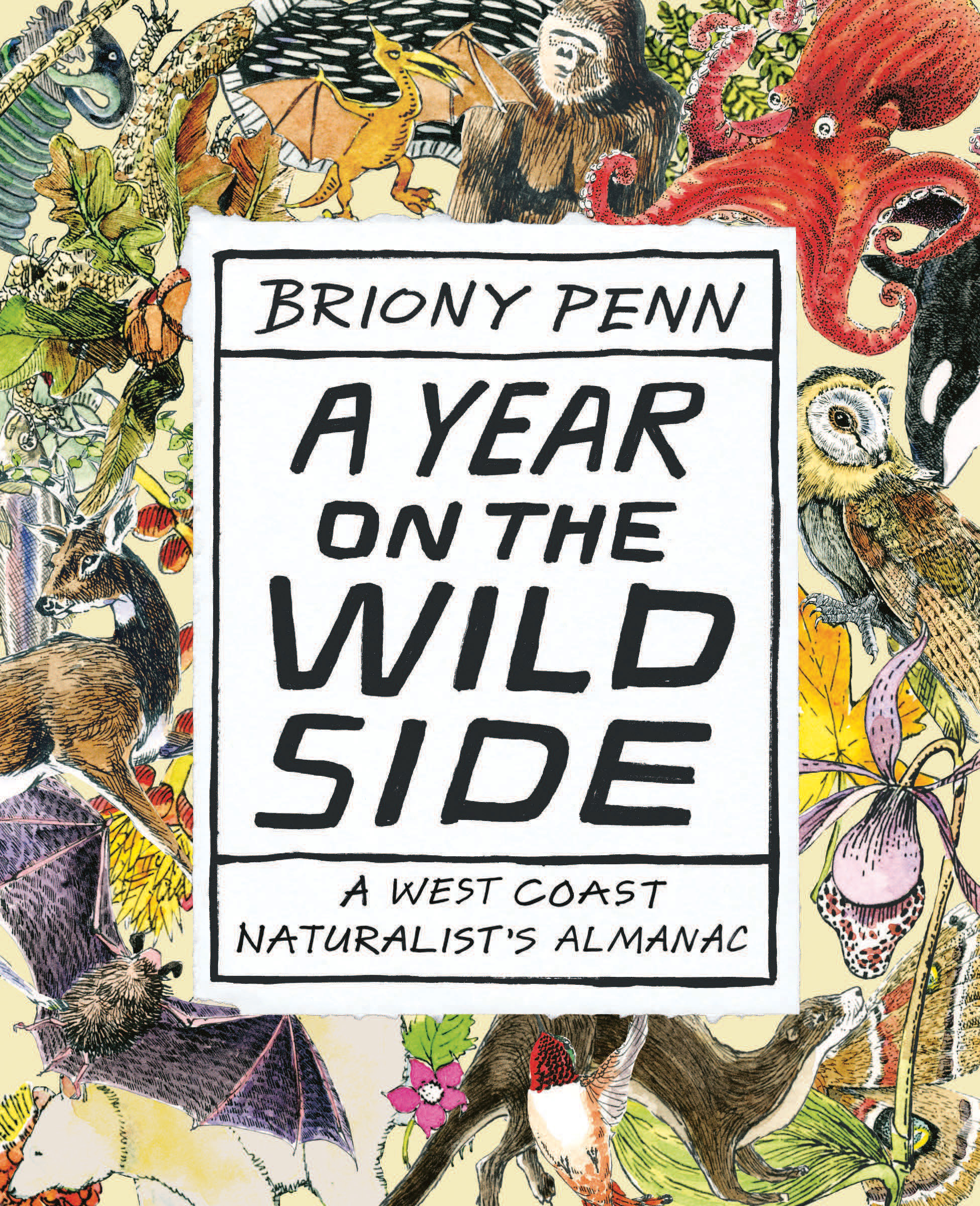In honour of #CephalopodWeek, we’re pleased to share a personal essay from Briony Penn’s west coast almanac, A Year on the Wild Side.
Another Seaside Attraction
January
She was washed up on the shore: a quiet mass of mottled pink flesh diminishing, even in the thin heat of the January sun. The remaining arms and glassy eyes were the only recognizable features that identified her. We stared at her, so did the crows hopping anxiously at a safe distance from us. She was a Giant Pacific Octopus (Enteroctopus dofleini). Her arms would have curled from my head to my toes had we met each other deep in the Saanich Inlet on the east coast of Vancouver Island, where she washed in from. Grounded, she stretched four metres (12 feet) from tip to tip. She became a seaside attraction; everyone came to look at her until another high tide dragged her back into the sea, slightly the worse for wear. I checked her every day out of a sense of duty—an irrational kinship with this mound of evaporating flesh, anxious to see her well thought of by the visitors.
Most people who have lived on or by the sea have an octopus story, and I heard some of them during my vigil by her side. One fisherman told a story about trying to chase an octopus that had come up in his net around the decks. Tentacles flying, it eventually squeezed its huge body through the gunwales to escape. Another halibut fisherman told me his deckhand got wrapped up in the tentacles of an octopus he was trying to kill. The captain threw them both into the fishhold so that he wouldn’t have to see his deckhand eaten alive. The mate escaped out of the hold, threatened to eat the captain alive, and abandoned ship with the live octopus.
One scuba diver recounted a story about a male threatening him when he interrupted a breeding session. The males enlarge and modify part of one of their tentacles into a sexual organ. They use it to remove a package of sperm a metre long from their mantle and deposit it in the mantle of the female. The arm of a Giant Pacific Octopus is daunting enough at 20 metres (65 feet) below the surface, without it being twice its normal size, laden with sperm, and waving at you.
An aquarium buff testified to the fact that octopi have long-term memories, unlike any other invertebrates, and can perform problem-solving tricks. An eight-year-old boy told me that a Giant Pacific Octopus could eat a BC Ferries vessel. A six-year-old child told me that if you blindfold an octopus, it could tell the difference between two objects. These were all pertinent anecdotes, but I needed an octopus expert to answer a simple question that everyone who visited the roadside attraction asked me: why did she die?
Pacific Giant Octopus dwell along the Pacific shores, but the largest ones in the world have been found in Saanich. Typically you only see them around docks in their early phase, a swarm of young octopi changing colour from brilliant green to deep blue, feeding on the plankton. But what happens after that? When do they descend to the bottom of the sea to start their adult life? Everything loves to eat baby octopi, but what preys on the large adults?
In 1922, Dr. Fisher conducted the first Western scientific documentation of their life cycle by watching a female kept in captivity. She laid thousands of eggs, looking like long bunches of sultana grapes, which she attached to the ceiling of a den in a tank. The female tended her eggs, swooshing water through her siphon over them, carefully cleaning them with her suction cups, and forming her body into a basket shape around them to keep them safe from predators. He never saw her leave them, nor did she accept food. Instead, she picked up food that was offered her and, flushing reddish-brown, hurled it away from her den. The eggs started to hatch into tiny larvae two months later, and she stood guard by them until the last egg hatched. She died shortly thereafter. Researchers have repeated Dr. Fisher’s historical observations many times over. Octopus may live beyond five years, but as soon as they breed, they die, like salmon.
This was the crucial piece of information I was looking for. My intuitive regard for this overworked mother (they can brood up to 200,000 young) was justified. I could empathize with the exhausted heap of mottled pink flesh with only two glassy eyes and a few remaining arms—there are many of us who answer to that description. She was hounded by fishers, chased into tight corners, and deafened by oil tankers. She performed party tricks behind glass and still found time to suction off dirty offspring. She deserved to lie in dignity.
*Excerpted from A Year on the Wild Side by Briony Penn, 2019


